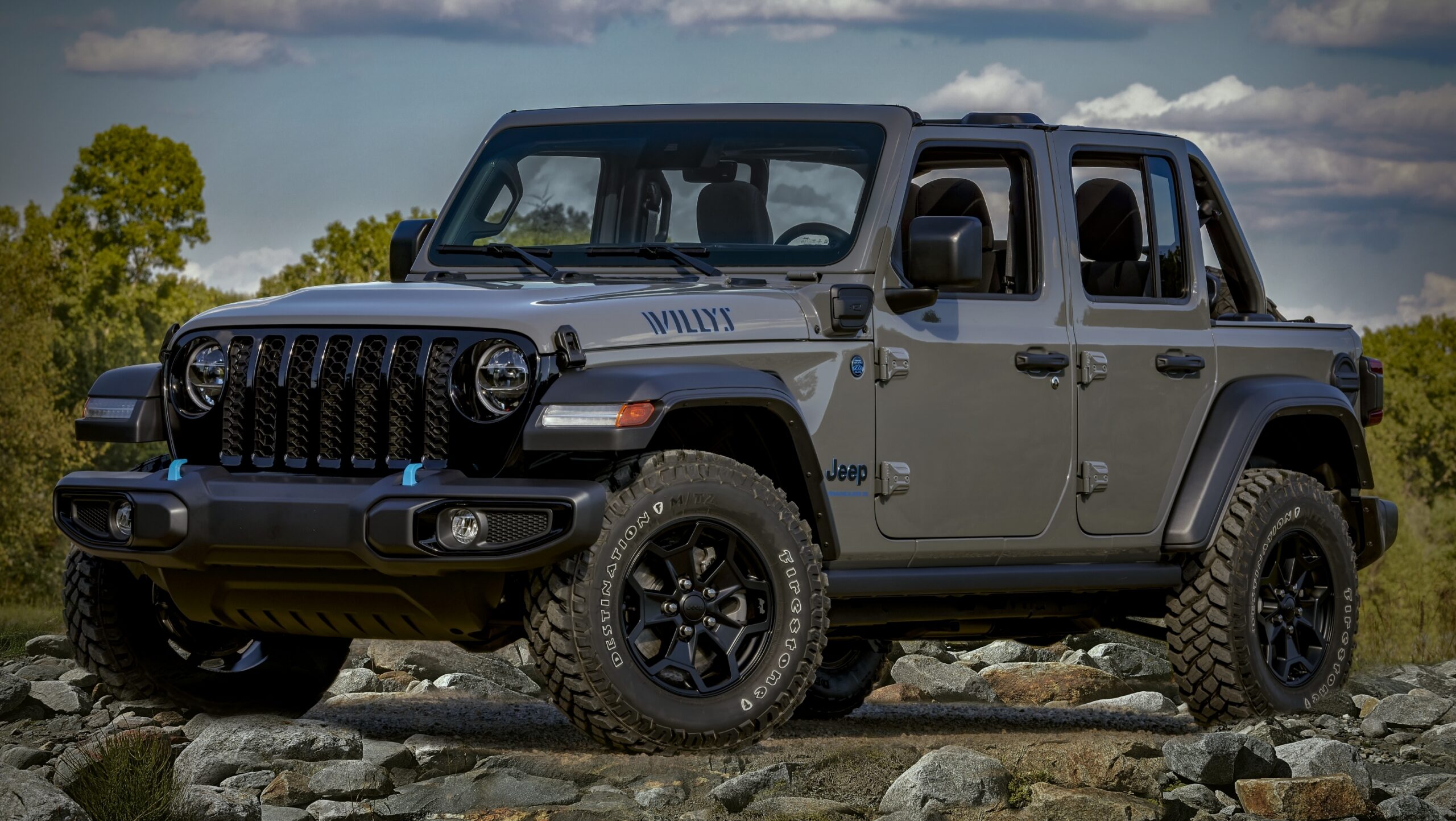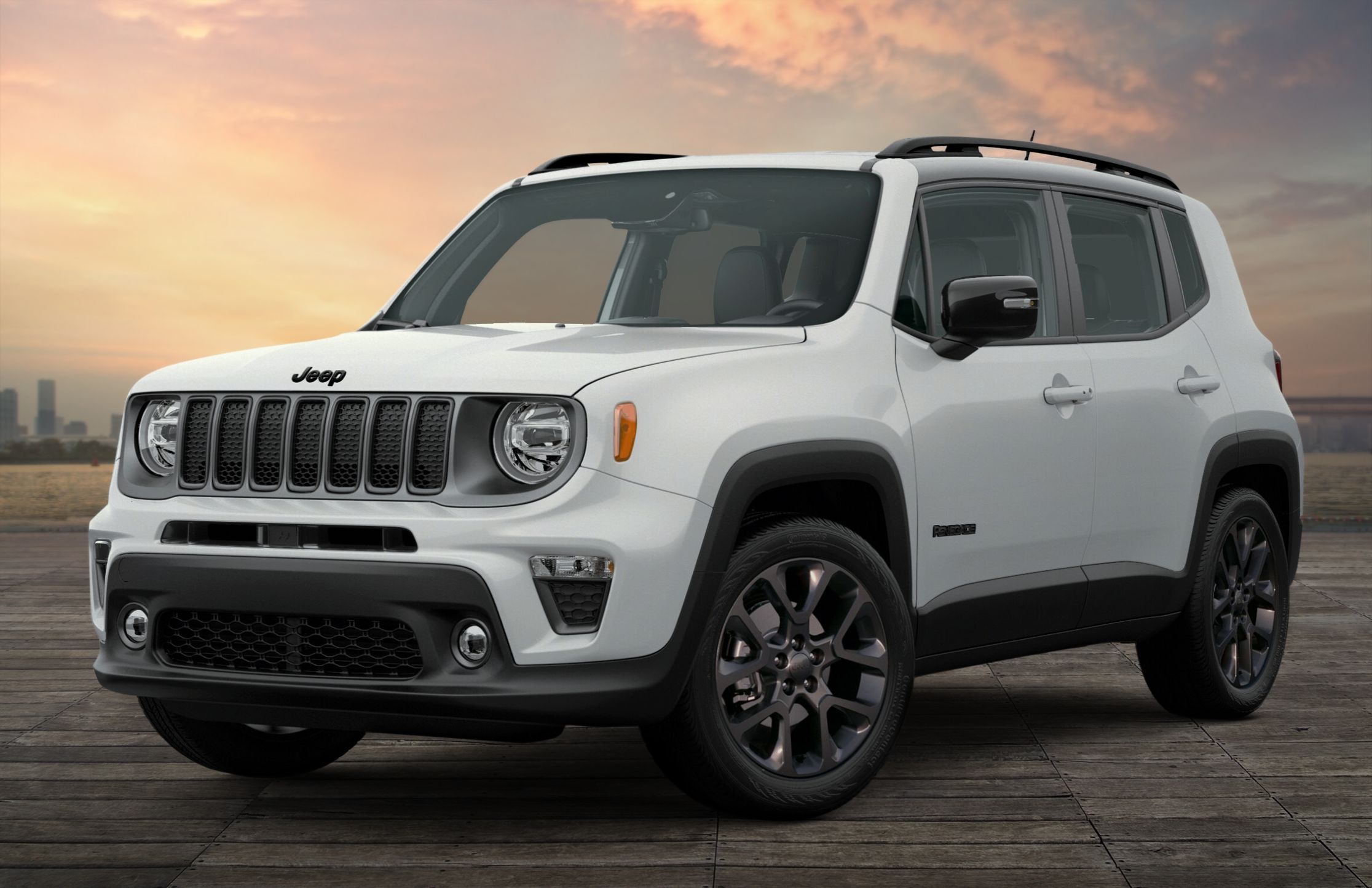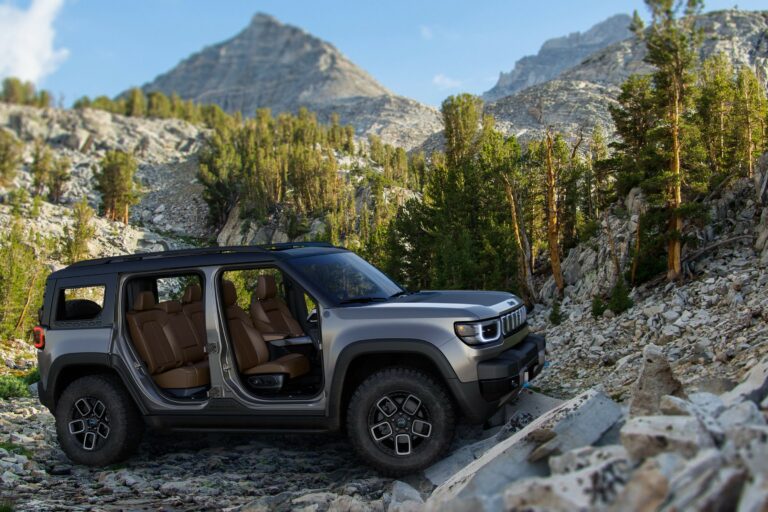Jeep TJ Dana 44 Front Axle For Sale: Your Ultimate Guide to an Essential Upgrade
Jeep TJ Dana 44 Front Axle For Sale: Your Ultimate Guide to an Essential Upgrade jeeps.truckstrend.com
For any serious Jeep Wrangler TJ owner, the pursuit of enhanced off-road capability often leads to one critical component: the front axle. While the stock Dana 30 serves adequately for light trails, its limitations quickly become apparent when tackling challenging terrain, running larger tires, or installing a locker. This is where the Jeep TJ Dana 44 Front Axle steps in, a highly sought-after upgrade that transforms your rig from capable to truly formidable.
This comprehensive guide is designed for anyone considering, searching for, or looking to understand the nuances of a Jeep TJ Dana 44 Front Axle for sale. We’ll delve into why it’s a crucial upgrade, what to look for, where to find one, and essential considerations to ensure you make an informed purchase.
Jeep TJ Dana 44 Front Axle For Sale: Your Ultimate Guide to an Essential Upgrade
Why Upgrade to a Dana 44 Front Axle in a TJ?
The Jeep TJ Wrangler (1997-2006) primarily came equipped with a Dana 30 front axle. While sufficient for daily driving and mild off-roading, the Dana 30 has inherent weaknesses that limit its performance under stress:
- Smaller Ring and Pinion Gear: The Dana 30 uses a 7.12-inch ring gear, significantly smaller than the Dana 44’s 8.5-inch ring gear. This directly translates to less torque handling capability and a higher risk of gear failure under heavy loads, especially with larger tires (33 inches and above).
- Weaker Axle Tubes: The Dana 30’s axle tubes are thinner, making them more susceptible to bending or breaking, particularly when subjected to impacts or extreme articulation.
- Smaller Axle Shafts: While the Dana 30’s axle shafts can be upgraded, stock units are generally weaker than stock Dana 44 shafts.
- Limited Aftermarket Support for Extreme Builds: While lockers and gears are available for Dana 30s, the overall strength of the housing and ring gear still poses a bottleneck for truly aggressive off-roading.

The Dana 44, on the other hand, addresses these limitations head-on. With its robust construction, larger gearset, and beefier axle tubes, it offers:
- Significantly Increased Strength: Capable of handling larger tires (35-37 inches with proper upgrades), aggressive driving, and the added stress of locking differentials.
- Improved Reliability: Reduced risk of axle failure on the trail, giving you greater confidence in challenging situations.
- Wider Aftermarket Support: A vast array of lockers, gearing options, and heavy-duty axle shafts are readily available for the Dana 44, allowing for further customization and bulletproofing.
- Enhanced Resale Value: A TJ equipped with a Dana 44 front axle is a more desirable vehicle in the aftermarket, commanding a higher resale value.

Identifying a Genuine TJ Dana 44 Front Axle
Not all Dana 44s are created equal, especially when it comes to bolting into a TJ. It’s crucial to distinguish a factory TJ Dana 44 from other Dana 44 variants (e.g., from XJ Cherokees, JK Wranglers, or older trucks) that will not be a direct bolt-in.
Key Identification Markers for a Factory TJ Dana 44:
![]()
- Axle Tube Diameter: The Dana 44 typically has larger diameter axle tubes than the Dana 30.
- Differential Cover Shape: The Dana 44 has a more oval-shaped differential cover, usually with 10 bolts (compared to the Dana 30’s 10-bolt, but distinct shape).
- Coil Spring Perches: A factory TJ Dana 44 will have integrated coil spring perches designed for the TJ’s suspension geometry. These will be positioned correctly for coil springs, not leaf springs.
- Control Arm Mounts: Look for the specific upper and lower control arm mounts welded onto the axle tubes. These must match the TJ’s four-link suspension design.
- Track Bar Mount: A dedicated track bar mount will be present on the driver’s side, designed for the TJ’s front track bar.
- Width (Wheel Mounting Surface to Wheel Mounting Surface – WMS): A factory TJ Dana 44 will have a WMS of approximately 60.5 inches. This is vital for maintaining proper tire clearance and handling.
- Factory Installation: Factory TJ Dana 44s were primarily found in Rubicon models (both front and rear) and were an optional upgrade on some Sahara and Sport models. These are low-pinion axles.
Note: Be wary of Dana 44s from other vehicles. While some fabricators can adapt them, it involves cutting off old mounts and welding on new ones, a process that requires significant skill and specialized equipment. For a direct bolt-in, you need a TJ-specific Dana 44.
Key Components and Features to Look For
When evaluating a Jeep TJ Dana 44 Front Axle for sale, pay close attention to the following components:
- Gear Ratio: The ratio (e.g., 3.73, 4.10, 4.56, 4.88, 5.13) is crucial. Ensure it matches your rear axle’s ratio or plan to re-gear both. Common factory TJ Dana 44 ratios are 3.73 and 4.10 (especially in Rubicons).
- Locker/Limited Slip Differential: Some factory Dana 44s (like those in Rubicons) come with selectable air lockers. Others might have a limited-slip differential (like the Trac-Lok) or an open differential. Aftermarket lockers are also common. Verify the type of differential.
- Axle Shafts: Check for straightness and condition. Stock shafts are adequate, but many owners upgrade to chromoly shafts for increased strength. Ask if the shafts are stock or aftermarket.
- Ball Joints: These are wear items. Inspect for play. If worn, factor in the cost of replacement.
- Unit Bearings: Similar to ball joints, inspect for looseness or grinding noises. These are also replaceable.
- Brake Components: Check the condition of calipers, rotors, and pads. While these are often replaced, a good set can save you money.
- Control Arm Mounts, Coil Spring Perches, Track Bar Mount: Ensure these are intact, straight, and free of cracks or significant rust. Any damage here will require costly repair or replacement.
- Axle Housing: Critically inspect the entire housing for any signs of bending, cracks, or severe rust. A bent housing is a major red flag and often not worth buying.
Where to Find a Jeep TJ Dana 44 Front Axle For Sale
Finding a specific, desirable part like a TJ Dana 44 front axle can sometimes be a hunt. Here are common avenues:
- Online Marketplaces:
- Facebook Marketplace/Jeep TJ Groups: Excellent for local listings. Join dedicated TJ enthusiast groups.
- Craigslist: Search locally and in surrounding regions.
- Dedicated Jeep Forums (e.g., JeepForum.com, WranglerForum.com): Many forums have "for sale" sections where members list parts.
- Junkyards/Salvage Yards: A great source for used parts, but finding a TJ Dana 44 specifically can be hit or miss and requires diligent searching. Prices can be lower, but condition varies widely.
- Specialty Jeep/Off-road Shops: Some shops might stock used axles they’ve taken off customer vehicles or rebuilt. They often come with a higher price tag but potentially better condition or a warranty.
- Word-of-Mouth: Let your local Jeep club or off-road community know you’re looking.
Important Considerations Before Buying
- Condition Assessment: Always inspect the axle in person if possible. If not, request high-resolution photos and videos from multiple angles, especially of critical areas like mounts, welds, and the housing itself. Ask for a video of the differential spinning (if possible) to check for bearing noise.
- Gearing Match: If your rear axle is already geared, ensure the front Dana 44 either matches or factor in the cost of re-gearing both axles. Running mismatched gears will damage your drivetrain.
- Budgeting for Rebuild/Upgrades: Assume you’ll need to replace wear items like ball joints, seals, and unit bearings. If the gears are wrong or an upgrade is desired, factor in the cost of a gear set and professional installation. An open differential might mean adding a locker.
- Shipping vs. Pickup: Axles are heavy and bulky. Shipping costs can be substantial. Local pickup is always preferred. If shipping, ensure the seller properly straps it to a pallet.
- Seller Reputation: Buy from reputable sellers. Ask for references or check feedback if buying online.
Installation Process Overview
Installing a Jeep TJ Dana 44 front axle is a significant undertaking that requires mechanical aptitude, proper tools, and safety precautions. While this isn’t a step-by-step guide, here’s a general overview:
- Preparation: Lift the Jeep safely on jack stands, remove wheels, and drain differential fluid.
- Disassembly: Disconnect brake lines, ABS sensors (if equipped), steering linkage (tie rod, drag link), track bar, shocks, and upper/lower control arms.
- Removal: Carefully lower and remove the old Dana 30 axle.
- Installation: Position the Dana 44 under the Jeep. Connect the control arms, track bar, shocks, steering linkage, and brake lines.
- Fluid & Bleeding: Fill the differential with new gear oil. Bleed the brakes.
- Alignment: Crucially, perform a professional alignment after installation to ensure proper steering and tire wear.
For those without extensive mechanical experience, professional installation by a qualified off-road shop is highly recommended.
Common Pitfalls and Solutions
- Bent Housing: The biggest red flag. Avoid axles with bent housings, as repair is often more expensive than sourcing a different axle.
- Incorrect Gearing: If the gearing doesn’t match your rear axle or desired tire size, factor in $600-$1000+ for a re-gear, plus parts.
- Worn Components: Ball joints, unit bearings, and seals are common wear items. Plan to replace them. Kits are readily available.
- Missing Parts: Ensure the axle comes complete with all necessary mounts, the differential cover, and ideally, brake components. Missing parts add to the total cost.
- Rust: Surface rust is common and manageable. Deep, structural rust that compromises the integrity of the housing or mounts is a deal-breaker.
Price Table: Estimated Costs for Jeep TJ Dana 44 Front Axle
Prices for used Dana 44 front axles vary significantly based on condition, included components, and market demand. The table below provides estimated ranges for different scenarios. These are not definitive prices and can fluctuate.
| Condition/Configuration | Key Features | Estimated Price Range (USD) | Notes |
|---|---|---|---|
| Bare Housing | No internals (gears, shafts, differential), no brakes | $300 – $600 | Requires full rebuild. Good for custom builds where you’re adding all new internals. Verify straightness! |
| Complete Stock (Used) | Original gears, open diff/Trac-Lok, stock shafts, some wear | $800 – $1,500 | Most common option. Expect to replace ball joints, seals, and unit bearings. Gearing may need to be changed. |
| Rubicon Take-Off | Stock 4.10 gears, factory selectable air locker, stock shafts | $1,800 – $3,000+ | Highly sought after. Air locker adds significant value. Verify locker functionality and air lines. |
| Upgraded (Used) | Aftermarket gears, aftermarket locker (e.g., ARB, Eaton), chromoly shafts | $2,000 – $3,500+ | Excellent value if upgrades are what you want. Verify condition of upgrades. Can be cheaper than building from scratch. |
| Rebuilt/Refurbished | Fresh bearings, seals, new ball joints, possibly new gears, professionally inspected | $2,500 – $4,000+ | Often comes from a reputable shop. Higher price, but less immediate work needed. Ask about warranty. |
Note: These prices do not include shipping, installation, or the cost of new fluids or additional upgrades.
Frequently Asked Questions (FAQ)
Q: Is the Dana 44 a direct bolt-in for any TJ?
A: A factory TJ Dana 44 is a direct bolt-in for any TJ Wrangler (1997-2006). Dana 44s from other vehicles (e.g., XJ, ZJ, JK, trucks) are not direct bolt-ins and require significant fabrication.
Q: Do I need to re-gear my rear axle if I get a D44 front?
A: Yes, absolutely. Your front and rear axle gear ratios must match. Driving with mismatched gears, especially in 4WD, will quickly destroy your transfer case and potentially both differentials.
Q: How much does it cost to re-gear an axle?
A: Re-gearing typically costs $400-$700 per axle for labor, plus the cost of the gear set and master install kit (another $200-$400 per axle). So, re-gearing both axles can easily run $1200-$2200+.
Q: What’s the difference between a high-pinion and low-pinion D44?
A: A high-pinion axle (like the Dana 30 front) has the pinion gear positioned above the centerline of the ring gear, offering better driveshaft angles and strength under forward load. A low-pinion axle (like the TJ Dana 44 front and most rear axles) has the pinion below the centerline. While high-pinion is generally preferred for fronts, the TJ Dana 44 is a low-pinion design, which is still a significant strength upgrade over the Dana 30.
Q: Can I use my stock brakes with a TJ Dana 44?
A: Yes, the TJ Dana 44 front axle uses the same brake components (calipers, rotors) as the Dana 30, making brake compatibility a non-issue.
Q: What are common upgrades for a TJ D44?
A: Common upgrades include chromoly axle shafts (inner and outer), aftermarket lockers (selectable or automatic), heavy-duty differential covers, and re-gearing to match larger tires.
Conclusion
The Jeep TJ Dana 44 front axle is more than just a component; it’s a gateway to unlocking your Wrangler’s true off-road potential. Upgrading from the stock Dana 30 provides a significant leap in strength, reliability, and confidence on the trail, allowing you to tackle more aggressive terrain and run larger tires without fear of catastrophic failure.
While the search for a good quality Dana 44 can require patience and diligent research, the payoff is immense. By understanding what to look for, where to search, and what questions to ask, you can secure a valuable asset that will enhance your TJ’s performance for years to come. Invest wisely, and your Jeep TJ will thank you with unparalleled capability on your next adventure.





